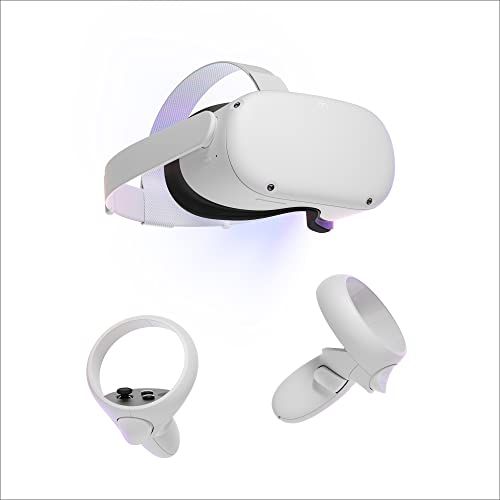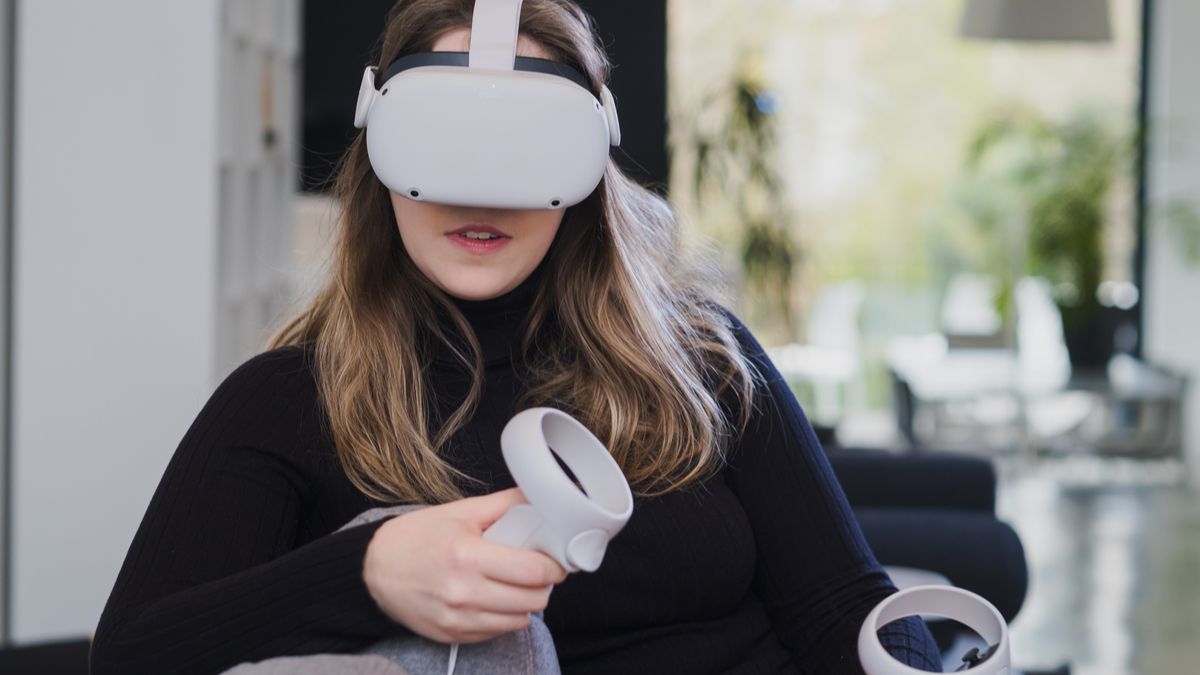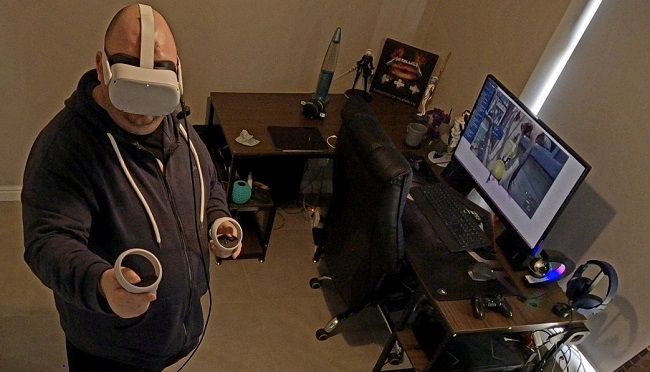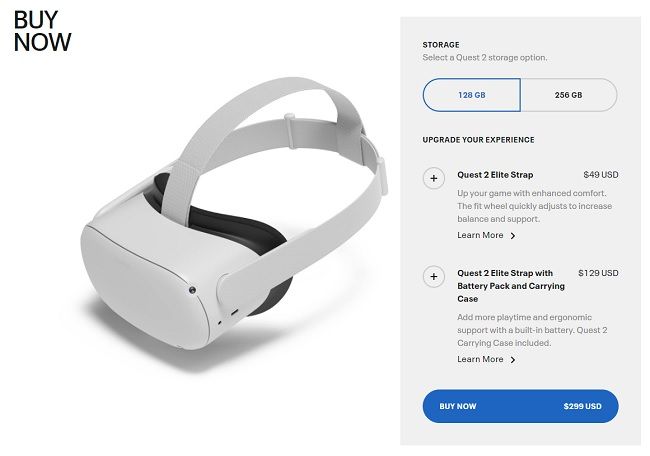Quick Links
The Oculus Quest 2 represents a major shift not just for Oculus, but for VR as a whole. Compact, affordable, and almost infinitely versatile, this is the template for the future of VR. One day we'll remember it started here.
A Crash Course on Quest
In case you've never heard of the Oculus Quest 2, it's the latest in a series of standalone VR headsets. "Standalone" means that, like a video games console or PC, you only need to buy the headset to start using the software. Inside the Quest 2 is an entire mobile computer as well as a digital storefront with games and apps.
The Quest headsets are battery-powered and don't need external motion trackers, so you can take them anywhere with you. Best of all, if you have a VR-capable PC, you can use a Quest headset as a tethered PC VR headset, too. You can even play PC VR games wirelessly.
Versatility Is the Key
The Quest 2 is incredibly versatile, and that's the main reason we think it's the future of VR. You only need to buy this one VR headset and you get access to almost every form of VR. Whether you want to play high-end PC VR games, use VR at room-scale, seated, or play on the bus (in front of bemused commuters), you can.
Like a tablet or laptop, you can throw a Quest 2 in a bag and take it with you. (You probably want to buy the official carrying case before you do that, of course.)
The greatest feat Oculus pulled off with the Quest is the removal of friction between wanting to access VR and being in VR. There's nothing to set up, at least not after the initial, well, setup. Simply put the headset on and you're back in the action. VR that you can just step into at any moment is crucial for widespread adoption of the technology. The Quest 2 has already crossed a crucial threshold in this area.
The Quest's Price Is Right
A base model 128GB Quest 2 will set you back $299. While that's not a small amount of money, it's definitely in the same ballpark as the Nintendo Switch or Xbox Series S. It's also quite a lot cheaper than premium PC VR headsets such as the Valve Index or HP Reverb G2. While it's only a third of a Valve Index's price, the Index isn't three times better. You're getting 80% of the premium PC VR experience at only 30% of the price. It's hard to believe that Oculus is making any money on the hardware at this price, but it's a fantastic deal for users and opens up the way for mass adoption of the technology.

Oculus Quest 2 128GB
The Quest 2 is the only real choice in standalone VR right now, so it's a good thing it's also the best option. Ultimate versatility combined with a great entry price.
It's a Gateway to Mixed Reality
While the Quest 2 wasn't designed as a proper mixed reality device, Oculus has continued the tradition of the original Quest by finding new ways to repurpose the hardware of the headset to do new things. It started with their attempts at turning the first Quest into a PC VR headset using a USB cable and that was so successful it killed off every other Oculus headset, altering the entire course of the company's product range. Oculus also figured to how to use the onboard tracking cameras to track bare hands, without controllers. This allows for a whole new type of VR experience and interactivity level.
Lately, the company has been experimenting with basic mixed reality features. The tracking cameras can only reproduce black and white footage, that's enough to create a few cool use cases. For example, the Quest headsets can now recognize your desk, sofa, or computer keyboard and mix them in with the VR visuals. This lets you interact with real-world objects easily and makes VR productivity applications more practical.
The future of VR is probably "extended reality", where you can go from full virtual reality, through mixed reality, all the way to real reality at will. All using a single headset. The Quest 2 isn't there yet, but it's shaping up to be the mainstream entry point for extended reality. We expect some future Quest successor to have cameras that also take full-color, stereoscopic mixed reality into account.
The Quest Pro and the Future of VR
Speaking of VR's future, there are persistent rumors of a Quest Pro on the way, although we don't know much about it other than it's a separate device from a purported Quest 3. Microsoft has somewhat eased off the gas when it comes to their enterprise-focused Windows Mixed Reality platform and we can imagine that Oculus may want to move into the professional space with a more business-focused Quest.
As for the future of the consumer Quest line, the trend will likely be towards smaller and lighter headsets. Possibly using micro-OLED panels, which may make it possible for VR headsets that are more like ski-goggled than diving masks. Micro-OLED technology is a hot topic in VR and even the rumored Apple VR headset is thought to use it.
Whoever ends up cracking the mainstream VR market, we suspect that product will have more in common with the Quest than the Oculus Rift. Indeed, Valve's Index successor might turn out to be a standalone headset too. Imitation really is the sincerest form of flattery.
The Quest 2 Is Not Perfect
The Quest 2 is a great device, and we really do see it breaking new ground for what VR will be going forward---but that doesn't mean it's the perfect product today.
You can argue that the Oculus Quest 2 is a step back in some ways compared to the Oculus Quest 1, of course. We wish it didn't require a Facebook account, too.
The Quest 2 has plenty of room for improvement, but it's hard to recommend any other headset to the average person who wants to get into virtual reality today. If you don't have a VR headset yet, this is the most compelling one to buy---unless you have a high-end VR-ready PC and you're willing to spend a lot more money on a VR headset.
While it's not the most premium headset, it's packed with innovative software ideas (such as hand-tracking and inside-out motion tracking) and potent hardware for standalone VR experiences. Future versions of the Quest will of course iron out any remaining rough edges, but the Quest 2 is eminently a proper consumer product, ready for mainstream adoption.



